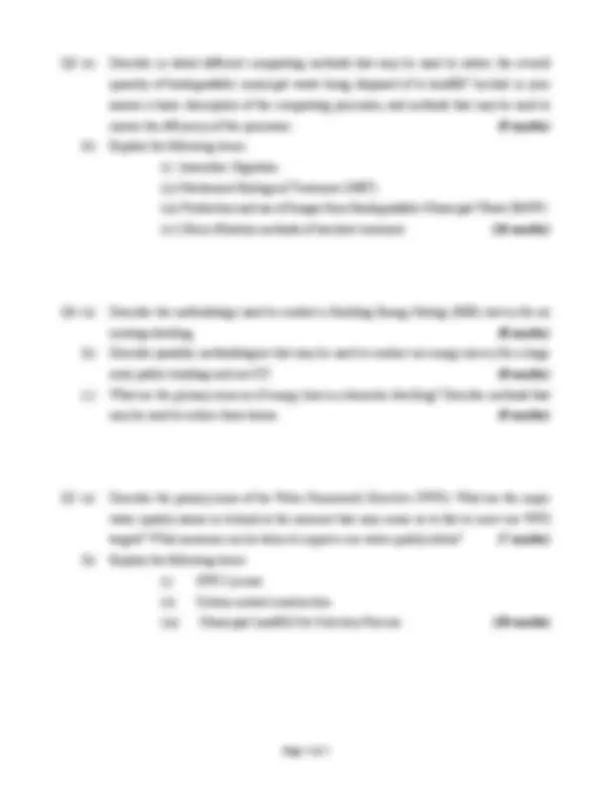



Study with the several resources on Docsity

Earn points by helping other students or get them with a premium plan


Prepare for your exams
Study with the several resources on Docsity

Earn points to download
Earn points by helping other students or get them with a premium plan
Community
Ask the community for help and clear up your study doubts
Discover the best universities in your country according to Docsity users
Free resources
Download our free guides on studying techniques, anxiety management strategies, and thesis advice from Docsity tutors
Main points of this past exam are: Flora and Fauna, Landscape, Possible Mitigation Measures, Greenhouse Gas Emissions, Global Climate Change, Source of Carbon Emission, Construction Industry, Kyoto Protocol, Anaerobic Digestion
Typology: Exams
1 / 3

This page cannot be seen from the preview
Don't miss anything!


Autumn Examinations 2008/
Module Code: CIVL 7007
School: Building and Civil Engineering
Programme Title: Bachelor of Engineering in Civil Engineering – Stage 3
Programme Code: CCIVL_7_Y
External Examiner(s): Mr J Kindregan, Mr J Lapthorne Internal Examiner(s): Mr TL O’Driscoll
Instructions: Answer four questions.
Duration: 2 Hours
Sitting: Autumn 2009
Requirements for this examination:
Note to Candidates: Please check the Programme Title and the Module Title to ensure that you have received the correct examination paper. If in doubt please contact an Invigilator.
Q1. An Environmental Impact Statement is to be prepared for a large scale wind-farm project in a rural location. (a) Describe the overall layout of the EIS to be submitted. (5 marks) (b) Describe how any impacts may be addressed in the EIS under the following headings: (i) Human Beings (5 marks) (ii) Flora and Fauna (5 marks) (iii) Landscape (5 marks) (iv) Air (5 marks) Describe the context, character, significance, sensitivity of each of the possible impacts and any possible mitigation measures that may be proposed for each.
Q2 (a) Describe how greenhouse gas emissions affect global climate change. What are the primary sources of these gases? (8 marks) (b) Concrete is a major source of carbon emission from the construction industry. Describe why this is the case, and where the emissions come from. What steps can be taken to reduce these emissions from concrete? Describe a number of case studies where this was done. (8 marks) (c) The energy sector in Ireland is a major source of carbon emissions. Describe trends in emissions, energy use, and energy sources in the recent past, and how these trends may need to change to enable us to reach our emission targets in the Kyoto Protocol. (9 marks)